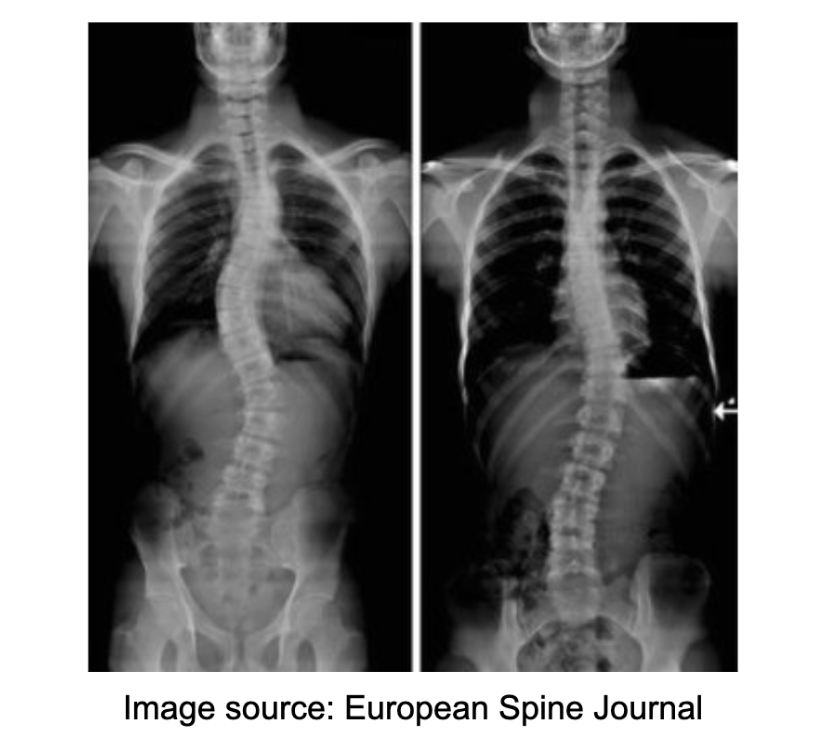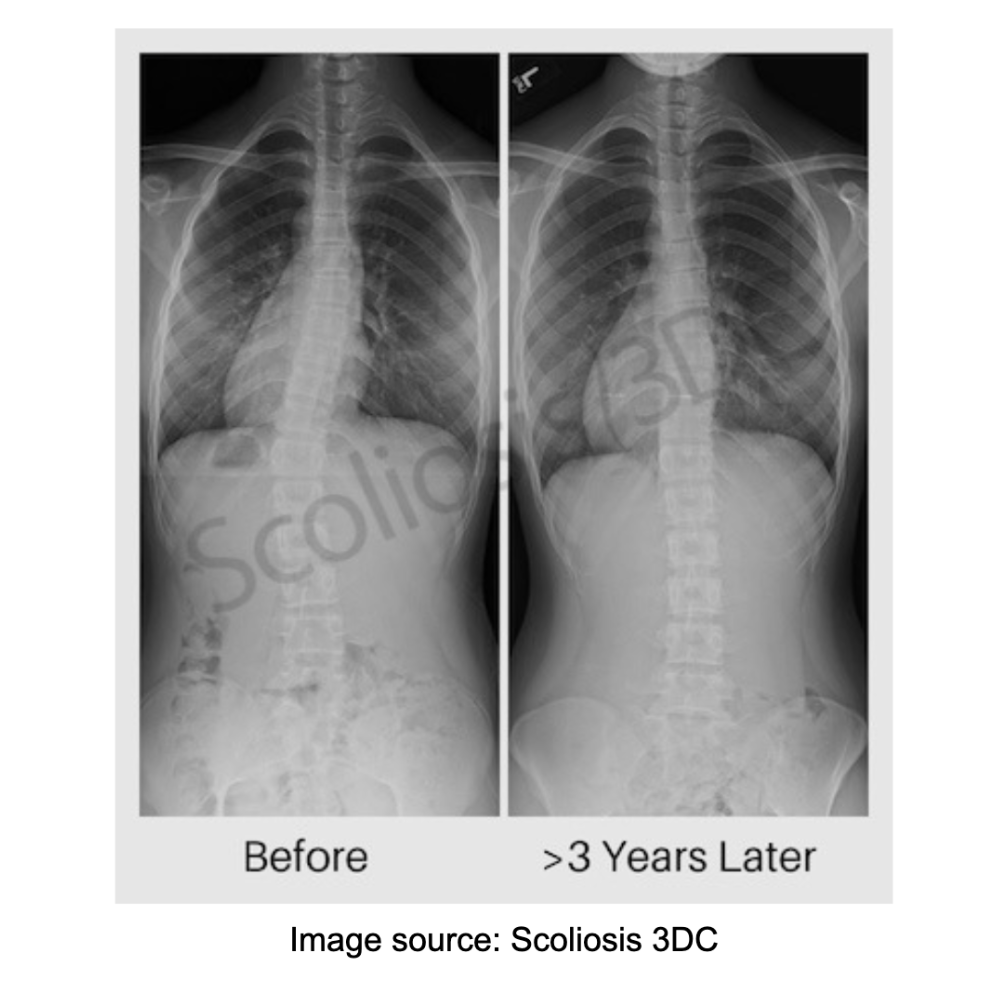How X-rays Are Used to Diagnose Scoliosis
by Caitlin Mari Oliveros, PTRP, PT, PF-1, BSPTS-1
Who this article is for:
|

If someone is suspected to have scoliosis, almost always an x-ray will be taken to confirm this suspicion. Typically, the x-ray is printed as a black and white film but may also be available digitally in CD format. It is usually accompanied by a report from the doctor or radiologist, explaining the results. Physical therapists are also able to measure (or re-measure) x-rays with/without a medical report.
The x-ray is just one of various tools used to rule in scoliosis, but it does not exclusively diagnose the condition. For example, physical therapists will use additional methods— measuring the vertebral rotation, performing the Adam’s forward bend test, assessing posture, reading a scoliometer, etc.— to confirm a diagnosis.
| ?Brain bite: Other diagnostic measures are also used to look for scoliosis (eg., EOS Imaging System and ultrasound), but x-rays are commonly prescribed, since they are quick and cost-effective! |
Relating to scoliosis, the x-ray can provide key information about a person’s spine health, which may include:
- The number of curves & their respective measurements
- The presence/absence of vertebral rotation
- Bone maturity level
- The symmetry/asymmetry of R & L sides of the body
- Leg length differences
- A clue into the person’s overall posture & flexibility
The x-ray gives us a glimpse into what we can’t see from the outside. However, various factors can influence this picture (eg., age, activity levels, brace wear compliance, etc.). After all, this is a snapshot of the spine at a particular moment— with the possibility of change as time goes on. For example, if an adolescent is consistent with their PT sessions & brace wear, their next x-ray will likely reflect an improvement. The physical therapist may actually use this new information by comparing new and old x-rays to either modify or keep a person’s plan of care.

So who should read an x-ray and how do you read it? Anyone can look at an x-ray, but the professionals (orthotists, doctors, physical therapists, etc.) have the best understanding of how to view this picture in its entirety. They will be able to explain best not only what the film shows, but they can also make clinical judgments as to what to expect next. A physical therapist, for example, may note that an x-ray showing mild scoliosis can actually progress rapidly without intervention, upon considering various factors like how the patient’s age is within the growth spurt. Despite all this emphasis of leaving it to the professionals to read an x-ray, it is still important for patients to have a general understanding of what their x-ray shows.
? Watch out for more posts like this in the future by subscribing to our newsletter!
☎️ If you are interested in scheduling an appointment for your first scoliosis evaluation or to learn more about our services at PhysioElements (both Manhasset, NY & Greenwich, CT), call our office at 516-365-3455. We also offer a FREE 15-Minute Consultation if you would like to connect with one of our physical therapists!
